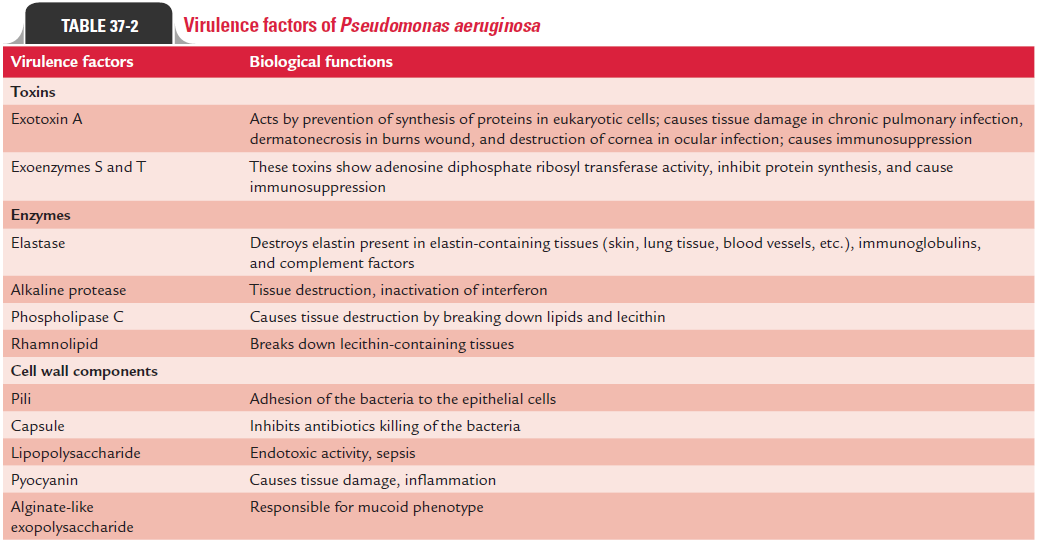Chapter: Microbiology and Immunology: Bacteriology: Pseudomonas, Burkholderia, and Moraxell
Cell Wall Components and Antigenic Structure - Pseudomonas aeruginosa
Cell Wall Components and Antigenic Structure
These include pili, slime layer capsule, lipopolysaccharide, and pyocyanin as described in Table 37-2.
Pili: Pili ofP. aeruginosaare similar to those present inNeisseriagonorrhoeae. They are important in mediating adhesion of thebacteria to the epithelial cells.
Slime layer: P. aeruginosacell wall is surrounded by looseslime layer. The loose slime layer, also known as alginate coat or glycocalyx, protects the bacteria from phagocytosis and against activity of many antibiotics, such as aminoglycosides. The production of the mucoid slime layer is mediated by genes. These genes are activated in patients suffering from chronic respiratory disease or in those with cystic fibrosis and when colonized.

Lipopolysaccharide: The cell wall ofP. aeruginosalike that ofother Gram-negative bacteria contains LPS. The LPS are endo-toxins, which constitute a major component of the cell wall and contribute to the sepsis caused by the bacteria.
Pyocyanin: Pyocyanin is a pigment that catalyzes theproduction of superoxide and hydrogen peroxide, and causes tissue damage. This pigment also contributes to inflammation associated with the disease.
◗ Antigenic structure
P. aeruginosa consists of O and H antigens.
O antigen: Somatic or O antigens are the group-specific anti-gens. P. aeruginosa possesses 19 distinct group-specific O anti-gens, on the basis of which the organism has been classified into 19 serogroups. O antigens are heat stable and can be extracted with acid or formamide. The O antigen can be detected by pre-cipitation reaction-in-gel or by tube or slide agglutination tests using specific antisera produced against these antigens. Some of the O antigens, such as serogroup 02 and 05 show cross-reactivity. P. aeruginosaserogroups O6 and O11 are isolated from majority of the clinical specimens. Serogroup O11 has been associated with most of the hospital-acquired infection caused by P. aeruginosa.
H antigen: Flagella or H antigens are found in the flagellaof P. aeruginosa. These antigens are heat labile. Two types of H antigens have been demonstrated by slide agglutination tests by using specific antibodies against these antigens.
Related Topics